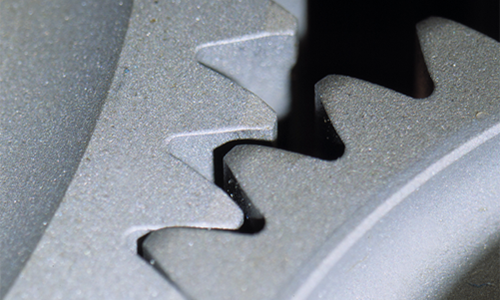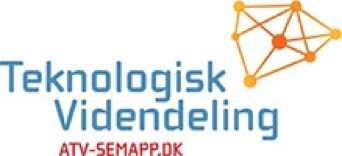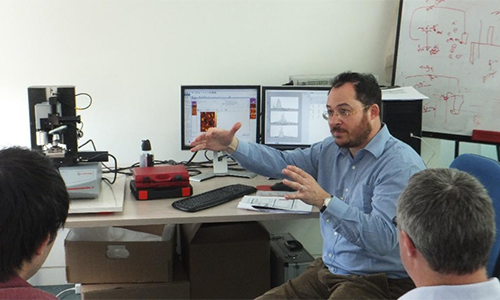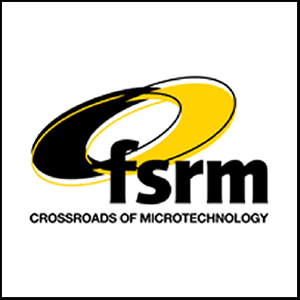
Introduction to Tribology

Tribology is defined as the science and technology of interacting surfaces in relative motion. It therefore encompasses the study of friction, wear and lubrication between surfaces in contact and the interactions at their interface. Such interactions may be the transmission of forces, the conversion of mechanical energy, the chemistry of the surfaces, or the interlocking phenomena related to surface morphology and topography. The basic essence of tribology is to understand these surface interactions and thus be able to solve problems and find adequate solutions.
The economic implications of tribology are significant with recent research showing that several percent of the Gross National Product (GNP) could be saved in many industrialized nations by solving tribological problems. This could be as simple a solution as the application of a low friction coating to a surface, the amelioration of the lubricant at the sliding interface, or the reduction in wear by changing the system design.
Tribology is a truly interdisciplinary science and must therefore by treated as one. Many engineers are unprepared for solving tribological problems because they only see one side of the problem. For example, a mechanical engineer may understand the mechanics of a contact, but not the potential chemical interactions that may occur, nor the potential for lowering friction by the addition of a lubricant. Also, most undergraduate engineering courses often neglect tribology, or only cover the subject very briefly. This does not help graduates to gain the tools necessary to solve real-world tribological problems.
This course begins with the basics of surface topography and contact mechanics, as well as fundamental concepts of deformation at different scales. This is followed by a focus on the different modes of friction and wear that may be encountered, with emphasis on adhesive and abrasive/erosive wear, ceramics wear, polymer wear and coatings wear. Two sessions are dedicated to the design of tribological tests, the instrument configurations currently available and the best ways to interpret test data.
At the end of this course, the attendee will have a solid understanding of basic tribology principles, test methods and will have gained a valuable starting point for solving real-world tribological problems.
This course is intended for engineers who have encountered practical friction and wear problems and want to learn how to solve them. It is equally intended for active researchers in surface science, coatings research, materials testing and product development.
Run annually at Danish Technological Institute, Kongsvang Allé 29, DK-8000 Aarhus C, Denmark: https://atv-semapp.dk/introduction-to-tribology/

Introduction à la tribologie

NOTE: this course is given in FRENCH
La tribologie est la science et la technologie qui traite de l’interaction de surfaces quand elles se trouvent en mouvement relatif. Cette discipline comporte ainsi l’étude des frottements, de l’usure et de la lubrification de surfaces en contact, ainsi que celle de leurs interactions à leur interface. Ces interactions peuvent être une transmission de forces, la conversion d’une énergie mécanique, les propriétés chimiques des surfaces en question, ou les phénomènes enclenchés par leur morphologie et leur topographie. L’essence même de la tribologie est donc de comprendre ces interactions en vue de résoudre les problèmes qui en découlent, et de trouver des solutions adéquates.
Les implications économiques de la tribologie sont significatives quand on considère, selon des recherches récentes, que plusieurs pour cent du Produit National Brut (PNB) de nombreux pays industrialisés pourraient être sauvés, si l’on apportait des solutions aux problèmes tribologiques. Ce pourrait être aussi simple que l’application d’un revêtement à faible coefficient de frottement sur une surface, l’amélioration du lubrifiant dans une interface coulissante, ou la réduction d’usure en modifiant le design du système.
La tribologie est vraiment une science interdisciplinaire et doit, par conséquent, être considérée sous un angle holistique. Les ingénieurs sont souvent mal préparés à résoudre les problèmes de cette branche car ils n’en voient qu’un aspect : un ingénieur en mécanique pourrait certainement comprendre les subtilités mécaniques de surfaces en contact, mais pas les interactions chimiques possibles, ou le potentiel d’une diminution de frottement grâce à un lubrifiant. De même, la plupart des cours d’ingénierie de premier cycle négligent l’étude de la tribologie – ou ne couvrent le sujet que très brièvement. Cette situation ne donne pas aux diplômés d’aujourd’hui les outils nécessaires pour résoudre les problèmes tribologiques du monde réel.
Le cours débute avec les bases de topographie de surface, les principes de la mécanique de contact, ainsi que les concepts fondamentaux de déformation à différentes échelles. Le cours se concentre ensuite sur les différents modes de frottements et d’usure, en mettant l’accent sur l’usure par adhésion et abrasion/érosion, l’usure des céramiques, des polymères et des couches de recouvrement. Deux sessions sont consacrées à des modèles de tests tribologiques, aux configurations instrumentales actuellement disponibles, et aux meilleurs moyens d’interpréter les données de tests.
A la fin du cours, le participant aura une bonne compréhension des principes de base tribologiques, des méthodes de tests, et aura atteint un précieux point de départ pour appréhender les problèmes tribologiques de ce monde.
Ce cours est destiné aux ingénieurs qui ont rencontré des problèmes pratiques de frottement et d’usure, et qui désirent apprendre comment les résoudre. Il s’adresse également aux chercheurs actifs dans la science des surfaces, dans la recherche des revêtements (films), dans les essais sur les matériaux, ou dans le développement de produits.
Run annually by FSRM (Swiss Federation for Research in Microtechnology): (https://www.fsrm.ch/doc/c638.php)

Nanoindentation Course

Practical indentation testing of materials to measure their mechanical properties has been in common use for over 100 years. Over that time there have been many developments, the most recent being the use of Instrumented Indentation, where load and depth are simultaneously monitored during indentation in order to exploit the resultant curve and calculate mechanical properties. Instrumented indentation has superseded many conventional indentation techniques (Vickers, Rockwell, Knoop, etc.) owing to its ease of use and better accuracy at low depths where conventional techniques would be either impossible to use or would produce large inaccuracies.
Many current engineers and researchers were schooled in the art of conventional indentation testing and perhaps lack the knowledge and experience required for instrumented indentation. In many current industrial applications, e.g., the automotive industry, an engineer is faced with measuring the mechanical properties of a 3 µm thick diamond-like carbon (DLC) coating on a steel component but he/she only learnt about Rockwell indentation at college, a method which is completely unsuited for such an application.
The traditionally trained engineer tends to treat mechanical properties as a “textbook value” where he/she assumes that the property, e.g., hardness, is the same throughout the material. This course sets out to shatter this myth and show by practical experimentation that most surface mechanical properties can vary greatly, especially close to the surface where they may have been influenced by machining, heat treatment, chemical exposure, or oxidation.
This course is therefore focused on providing the “bridge” from conventional techniques to the current state-of-the-art. It is designed to introduce instrumented indentation as a logical extension to traditional techniques and it combines theory with practical experimentation.
The course will include both theoretical and practical instruction from two leading experts from academia and an instrument manufacturer (Alemnis). Understanding of the underlying principles and practical measurement issues will be presented.
The two and half day schedule includes a minimum of two and a half hours of practical hands-on training using two commercially available nanoindenters where the attendees are split into two groups of 6 and a range of experiments are designed and executed with group input encouraged.
Run in various locations annually: www.nanoindentationcourse.com
Specifically at EPFL annually in Sept: http://edu.epfl.ch/coursebook/en/ccmx-advanced-course-instrumented-nanoindentation-MSE-656

The Cambridge Tribology Course: Friction, Wear & Lubrication

Intensive three-day programme offering an excellent opportunity to gain an overview of the field of tribology.
This highly successful course provides an insight into the principles which underlie this important topic. The course is run by the University of Cambridge Department of Engineering, a worldwide centre of excellence in the field. Tribology – the science and technology of friction, wear and lubrication – makes a vital contribution to almost every area of industrial activity and yet is often under-represented in the education of scientists and engineers.
The course consists of an intensive three-day programme delivered by leading experts. It offers an excellent opportunity to gain an overview of the field of tribology. Lectures, combined with informal discussion periods and a workshop session, will cover the key elements of the subject and will be complemented by case studies drawn from current industrial practice.
-
- Provides a comprehensive and cost effective overview of this vitally important area
-
- Introduces the theory and practice of friction, wear and lubrication in an industrial context
-
- Combines lectures and informal discussion periods with practice in problem solving
-
- Gives valuable, informal access to leading experts
-
- Enables networking with professionals from other sectors to share ideas and practice
- Provides a comprehensive volume of course notes and supporting material in electronic form for all participants
Run annually at University of Cambridge in Sept: https://www.ifm.eng.cam.ac.uk/ifmecs/ifm-ecs-courses/tribology/

Tribology: Friction, Wear and Lubrication

The study of friction, wear, and lubrication is of enormous practical importance, because the function of many mechanical, electromechanical, and biological systems depends on the appropriate friction and wear values. In recent decades, this field, termed tribology, has received increasing attention as it has become evident that the wastage of resources resulting from high friction and wear is greater than 6% of the Gross National Product. The potential savings offered by improved tribological knowledge are immense.
However, most engineers do not have a sufficient background in this area. For example, an undergraduate engineering student receives perhaps an hour of instruction in tribology. Moreover, most reference works of tribology provide little guidance to solving real-world problems.
This program presents current insights into tribology, focusing on such fundamental concepts as surface energy, elastic and elastoplastic deformation, micro-fracture, and surface interactions at the micro- and nano-scale. Special consideration is given to the application of fundamental knowledge to control friction and wear behavior through lubrication and the selection of materials and coatings in practical situations. Furthermore, modern experimental methods are discussed and several case studies are used to illustrate how fundamental tribology knowledge can be applied in the design of tribological components and systems.
Run annually in June by MIT (Massachusetts Institute of Technology) and commonly known as the “MIT Tribology Course”
http://web.mit.edu/professional/short-programs/courses/designing_tribological_systems.html

Reliability and Test of Microsystems

This course has been developed to give attendees the background to perform Microsystem reliability characterization from the component to system levels. Initially, we present the fundamentals of mechanical, environmental, and reliability testing as applied to Microsystems. The focus begins with the characterization of single components and structures; these are illustrated with practical examples from industry. We apply these procedures to MEMS and Microsystem level reliability test applications. Test techniques, specifications, and methodology are presented in detail with examples from industry. Additionally, for courses taking place in Neuchatel, participants will see live demonstrations of typical testing techniques to enable them to apply these concepts to their own application area.
This course is designed for the practicing scientist or engineer to provide a foundation in surface mechanical properties characterisation and reliability testing of Microsystems and Micro-Electro Mechanical Systems (MEMS).
Run annually by FSRM (Swiss Federation for Research in Microtechnology): http://www.fsrm.ch/doc/c141.asp


